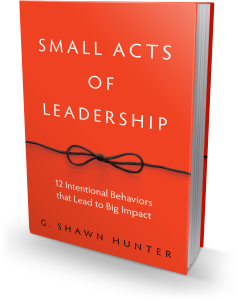A Secret to Rise Above Microstress

It turns out that if we can strengthen the relationships with the 500 more tangential people in our lives, we can build resilience to the micro-stressors in our lives.
You know what stress is. Stress is your partner loses their job, your child gets sick, you get a cancer scare. Or your house burns down. Sorry, that was a bit extreme. But extreme is often what we think when we think of stressful events. We overlook the micro-stresses in our everyday lives.
Microstress is a last minute edit from your client on the project that’s overdue. It’s realizing no one is picking up the boys after soccer practice, and you might have to rush over to transport six kids around town. It’s when your screen sharing app fails in the middle of your presentation. It’s when you can’t find your keys and you’re already late for the interview.
Microstressors are small, often overlooked stress-inducing events or interactions that occur in everyday life. They may seem insignificant on their own, but their cumulative effect can be substantial.
Because here’s what happens next: The 1st degree stressor is you pick up the assortment of kids at practice, and run around town for 40 minutes, yet then discover you don’t have the right ingredients for the meal you planned. You had an enjoyable evening of cooking planned with your family. So this makes you irritable, and you inflict a 2nd degree stressor on your partner with those vibes. The 3rd degree impact is you stay up late to work on the client’s last-minute changes, which disrupts your sleep, so you skip your morning workout. Not to mention the somewhat alarming emails you imposed on your colleagues at 10:30pm. So it goes.
“I’ve been just trying to get through this week for the past two years.”
Where Does Microstress Come From?
Miscommunication, tech glitches, interruptions, decision fatigue, social media notifications, and so on, all provide cumulative micro-stressors throughout the day, which impact you and everyone you interact with later. And these are just the stressors that affect your personal productivity. Rob Cross and Karen Dillon, authors of The Microstress Effect: How Little Things Add Up–and What to Do About It, also identify those kinds of stressors that deplete our emotional reserves such as toxic people or a constant impulse to care for the well-being of others.
And there are the microstressors that challenge your personal identity such as being asked to do tasks that don’t align with your values, or attacks on your personal identity or self-worth. Here’s a diagnostic tool to try to help recognize where it’s coming from.
How Do You Combat Microstress?
When we think about overcoming difficult moments in life, we often think of the personal attributes, or fortitude, people possess. It’s true that mindfulness, intentional breaks, exercise, healthy diet, and adequate sleep are all quite effective at alleviating stress and promoting well-being. Definitely do those things, but also recognize that they are personal, often isolated, and subject to our own willpower, discipline and habits.
But if you ask people the role of others to overcome adversity, you get different answers. It’s not just close friendships that matter, but a variety of relationships, especially those formed around shared interests such as cycling, religion, singing, tennis, or activism. These connections often involve individuals from different professional, socioeconomic, educational, or age backgrounds, enriching our lives with authentic interactions and broadening our perspectives. The activity itself feels like the primary pursuit – your exercise class, book club, or volunteer group – but the hidden benefits of these social interactions are surprisingly powerful.
In their research, Rob Cross and Karen Dillon point to these social groups to provide the strength to “rise above” microstressors in our lives. Specifically these social groups provide empathy, perspective, humor, and help us see a way forward – all in a way that closer ties, such as involved colleagues or family members, might not recognize because of their proximity to the stressful event.
Go join a singing group. Yes, a singing group. Robin Dunbar claims that the combination of endorphin release and speed-to-friendship made singing clubs the most effective means to create a sense of belonging and community. He found similar results with dancing groups and rowers.
So there you go. Put yourself out there.
_______________________________________________________
We just released a new series of courses on Embracing Curiosity for Career Growth. It includes valuable ideas how to overcome the small obstacles and micro-stresses that slow us down. You can find our catalog of high-impact courses here. And if you want something more tailored, you can learn about our custom work here.
My book Small Acts of Leadership, is a Washington Post bestseller! You can grab a copy here. And if you want to learn to apply some of these ideas and be an effective coach for your team, we wrote a course on that too. It’s called Coaching Skills for Managers.








